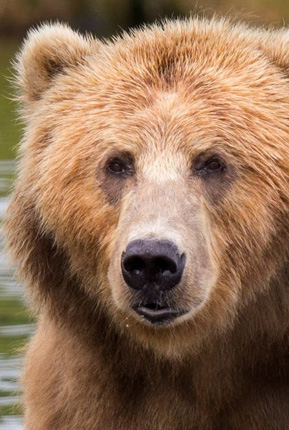
All Animals

The Bear: Majestic and Powerful Sovereign of the Wilderness
The bear, one of the most formidable and charismatic mammals, is a symbol of strength and resilience in the natural world. With their impressive size, diverse habitats, and complex behaviors, bears captivate the imagination and play a crucial role in the ecosystems they inhabit. From the dense forests of North America to the icy expanses of the Arctic, bears are a vital component of their environments.
Bears belong to the family Ursidae, which includes eight species distributed across various regions. These species range in size from the small sun bear to the massive polar bear. Adult bears can weigh between 60 to over 1,500 pounds (27 to 680 kilograms) and measure between 4 to 10 feet (1.2 to 3 meters) in length, depending on the species. Their powerful bodies, with strong limbs, large paws, and keen senses, make them formidable predators and foragers.
The brown bear, one of the most widespread species, is found in North America, Europe, and Asia. It exhibits considerable variation in size and color, from the grizzly bears of North America to the Eurasian brown bears. The American black bear, another common species, is known for its adaptability and can be found throughout North America, including forests, swamps, and even urban areas.
Polar bears, the largest of all bear species, are specially adapted to life in the Arctic. They possess thick, insulating fur and a layer of blubber to protect them from the cold. Their diet primarily consists of seals, which they hunt from sea ice. Polar bears are excellent swimmers and can cover long distances in search of food.
Bears are omnivorous, with diets that vary depending on their species and habitat. Most bears eat a combination of plants, fruits, insects, and small animals. Some, like the giant panda, have a diet predominantly composed of bamboo, while others, such as the Kodiak bear, are known for their varied diet that includes fish, berries, and mammals. Bears play a significant role in their ecosystems by dispersing seeds, controlling insect populations, and contributing to nutrient cycling.
Bears are generally solitary animals, except for females with cubs and during the mating season. The social structure of bears involves complex behaviors related to territory, mating, and parental care. Female bears, or sows, give birth to litters of one to four cubs, which are born blind and dependent on their mother. The cubs remain with their mother for about 1.5 to 3 years, learning essential survival skills before becoming independent.
Despite their formidable presence, bears face numerous threats from human activities and environmental changes. Habitat loss due to deforestation, urban expansion, and climate change affects their access to food and suitable living areas. In some regions, bears are hunted for their fur, body parts, or as part of conflict management efforts. Additionally, climate change poses significant challenges, particularly for polar bears, as the melting sea ice impacts their ability to hunt seals.
Conservation efforts for bears focus on habitat protection, sustainable management practices, and human-wildlife conflict mitigation. Establishing protected areas, promoting responsible tourism, and implementing policies to reduce poaching and habitat destruction are crucial for the conservation of bear populations. Public education about the ecological role of bears and the importance of coexistence can also contribute to their protection.
Bears hold a prominent place in cultural and symbolic contexts, often representing qualities such as strength, courage, and wisdom. Their presence in folklore, mythology, and art reflects their significance to human societies and their deep connection to the natural world.
In summary, the bear, with its majestic size, diverse behaviors, and vital ecological role, is a powerful symbol of the wilderness. Protecting bears and their habitats is essential for maintaining the health and balance of the ecosystems they inhabit. By supporting conservation efforts and fostering a greater appreciation for bears, we contribute to the preservation of these magnificent creatures and the well-being of our natural world.
